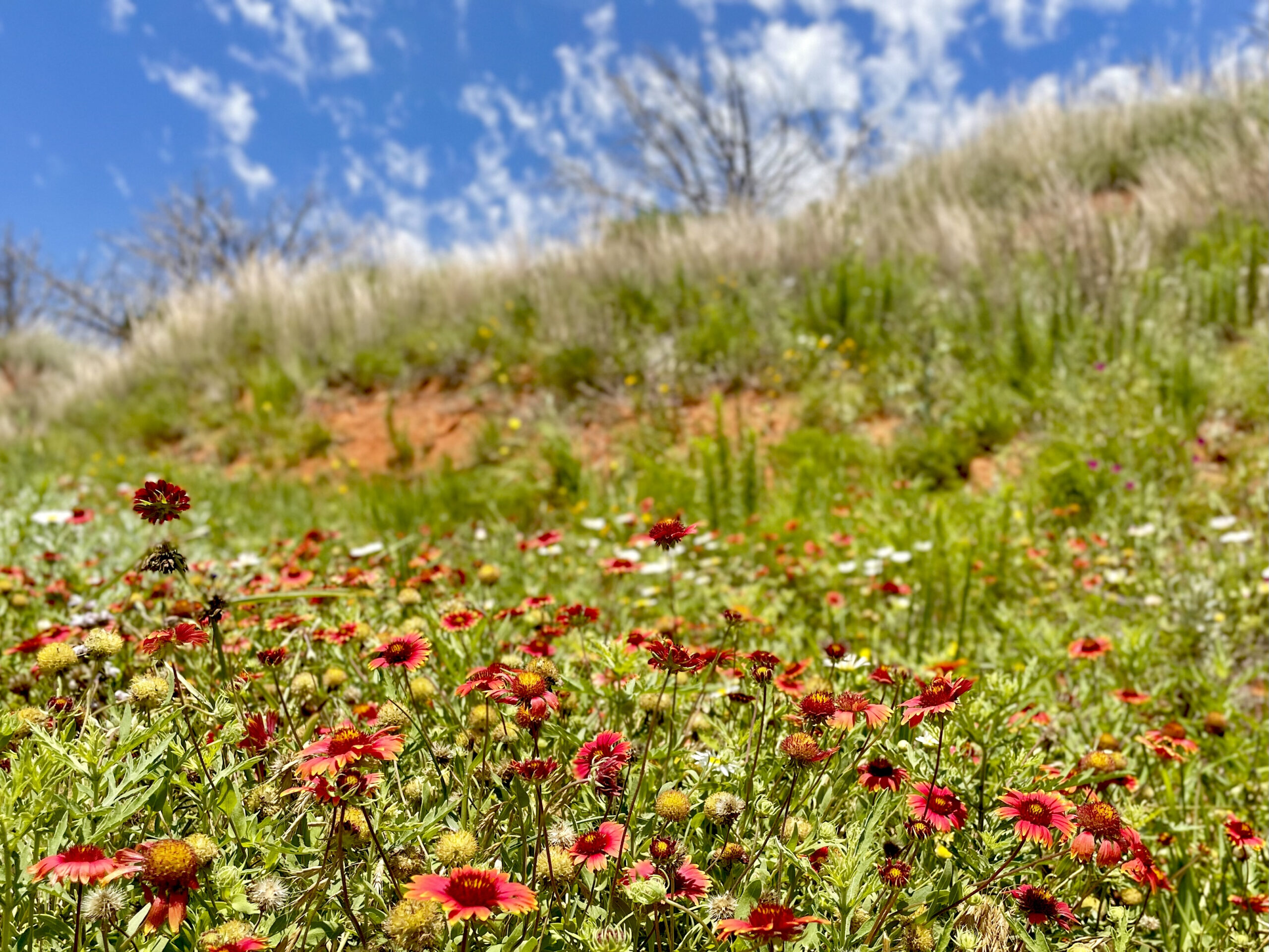
23 Jun Brian: Challenge accepted
Thomas, Oklahoma-The equipment is no longer new. Straw, chaff and the dust swirl around the machines as they make their way across the first field for the season. We squint through smudged windshields as we drive into the setting sun. The unmistakable red mud of Oklahoma sticks to the wheels of the machines. Yield monitors are configured, settings have been adjusted, and a semi is headed to town to deliver our first load. This may be the 40th time we have harvested on “the first day,” but the mood is always a little tense those first few hours. We’ve spent months preparing for this day, but did we forget to do something?
Of course the answer is yes, which is a little humorous if you think about it. Thankfully nothing requiring much effort goes wrong. I only make it 50 feet before a bolt comes out and causes an auger finger to come loose. When you are already a little on edge remembering how to operate a brand new $600,000 machine, the banging noise of an auger finger sounds more like a heart attack-inducing grenade going off. Ten minutes later the clattering of wrenches being tossed back into the toolbox can be heard. I shimmy back up the ladder and off we go again.
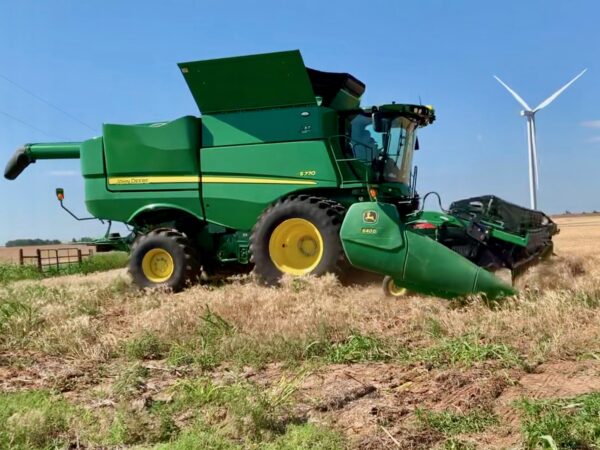


The summer begins with lots of firsts … first field, first lunch and first laundry day.
David doesn’t fair much better. After starting up the separator we immediately realize two cover plates, tucked out of sight under the machine, did not get reinstalled during a maintenance inspection at the dealership back home. It’s an honest mistake, and when you are driving what amounts to 15,000-plus pieces bolted together it’s not hard to imagine something so simple gets overlooked. It’s nothing a quick trip to the nearby Case IH ProHarvest Support parts trailer can’t easily fix. We align the covers, insert the locking pins and we are back in business.
Fortunately those are the only two minor issues we need to address, and the machines finish out the day. The first of many late nights, the crew comes home encouraged by the ground conditions. When we arrived the soil was saturated by the 11 inches of rain that had just fallen a few days earlier. We were certain nothing but a muddy mess awaited us, but that’s not what we found. The theory is the cracks in the soil were so deep the ground just gulped down the rain. The standing water we thought we would find in terrace channels is minimal, and the ground is relatively firm. We still leave lug marks in many places, and the 4×4 is always on. Pick your path wisely, as getting stuck frame-deep in red, sticky mud is still a possibility. If this is all the worse it gets we can manage these conditions.


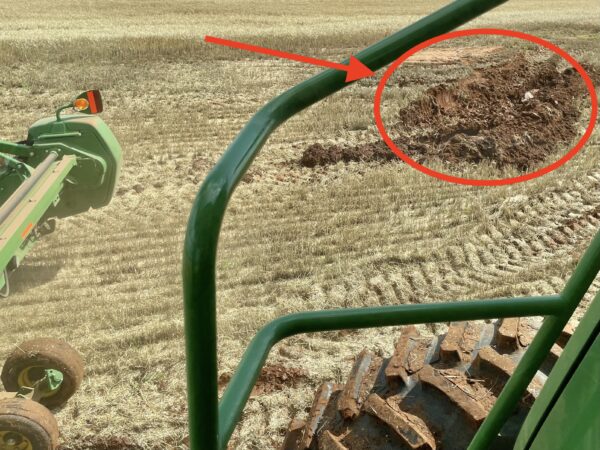
John Deere Harvester Works and Case IH ProHarvest Support help provide maximum uptime for the machines. Minefields of mud are more manageable with 4×4 on both combines.
Of course, it get worse. After only two short days of harvesting another 5 inches falls around the area. That makes over 20 inches of rain on some fields in the last week. It’s likely more rain than many areas have seen in the past 365 days. A few months ago the drought made us question if there would even be a wheat harvest here, and now rain threatens to keep us from being able to harvest what crop survived. There is some flooding and hail damage from the storm, but our biggest concern now is the ground holding up the weight of the equipment.
The heavy rains also decreased test weights, and the last thing we need is fewer bushels. The wheat is short, and I mean “only comes to the top of your boots” short. In fact, it’s so thin from a distance you can see red dirt between the rows and easily confuse it for already being harvested. We expect many fields to struggle to make 20 bushels per acre, but we have heard of a few approaching 40. We really haven’t harvested enough yet to predict the average yield. Perhaps we will be surprised, but we know it will be well below average.
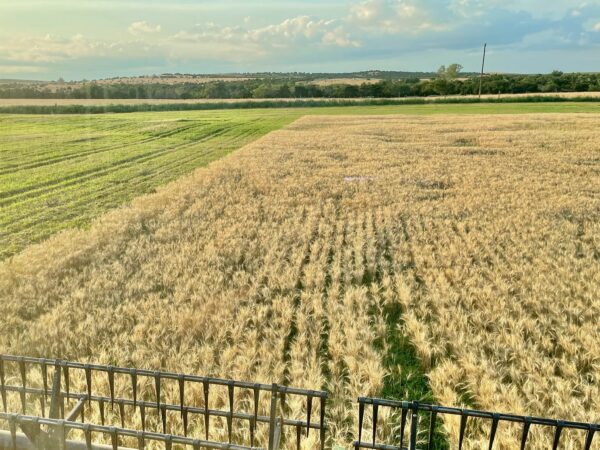


Green undergrowth makes some fields look like lawns once harvested, while others show the severe effects of drought. Lots of long nights lay ahead of us as we tackle challenging conditions.
So Oklahoma starts off difficult, almost as if challenging us to an arm wrestling competition. Weeds and difficult terrain are trying to strong arm us into submission. This is not the beginning to harvest we wanted, but for 40 years the crew has been preparing for matchups just like this. We’ve wrestled with these contenders before, and we have the muscle to win again. Much warmer, dryer weather is forecasted to be on our side next week. None the less, short wheat and muddy conditions are daring us to go another round, winner takes all. Challenge accepted.

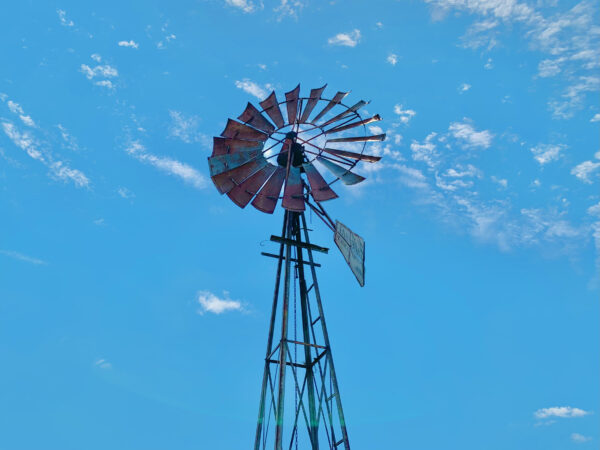
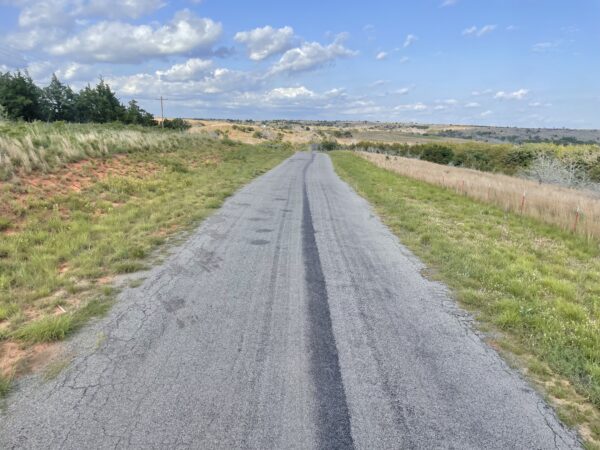
The hot summer sun beats down on on the unique, beautiful terrain that is unmistakably Oklahoma.
Brian Jones can be reached at brian@allaboardharvest.com.
All Aboard Wheat Harvest is brought to you by ITC Holdings, CASE IH, Oklahoma Baptist Homes for Children, US Custom Harvesters Inc., Unverferth Mfg. Co. Inc., Lumivia CPL by Corteva Agriscience, Kramer Seed Farms, and High Plains Journal.
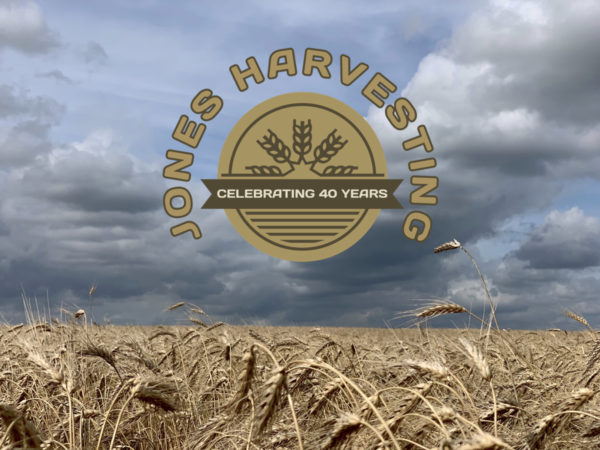

Sorry, the comment form is closed at this time.